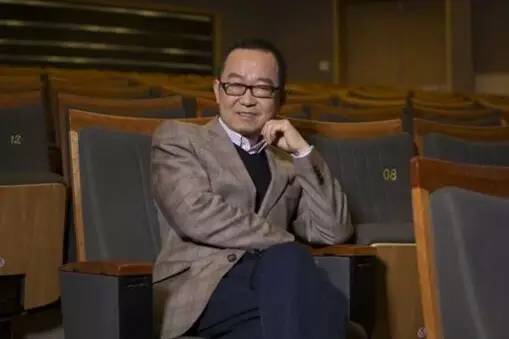Every five years, the Communist Party of China convenes a National Congress, where two key decisions are made: who will lead China for the next five years, and what path to development those leaders will follow. The CPC's recently completed 19th National Congress did all that and more.
Beyond choosing the next Politburo Standing Committee, the 19th Party Congress reelected President Xi Jinping as the CCP's leader and added his eponymous ideology – “Xi Jinping Thought” – to the Party's charter. The Congress also produced a blueprint for the country's future development until 2050, one that reflects the changes that economic reform and opening have brought to China.
At the CPC's 13th National Congress, in October 1987, China's leaders declared that the “major contradictions” facing the country were those between “people's growing material and cultural needs and the backwardness of social production.” In other words, the key challenge was to produce enough food, clothing, and books for all Chinese.
Thirty years later, the major contradiction China faces is that between “rising demand for higher standards of living and the constraints imposed by insufficient and unbalanced economic development.” In his address to the 19th Party Congress, Xi declared that, because China can largely deliver basic necessities to its people, the goal now should be to improve their quality of life.
With that in mind, the 19th Congress charted a new roadmap, based on the “two centennial goals” inherited from the 18th Congress. The first centennial goal is to build a “moderately prosperous society” (xiao-kang) by 2021, the 100th anniversary of the CPC's founding. The key here is to ensure broad prosperity, with poverty all but eliminated.
The second centennial goal is to transform China into a “fully developed and advanced nation” by 2049, the 100th anniversary of the founding of the People's Republic. The vision, confirmed at the Congress, is for China to be a prosperous, civilized, harmonious, and modern socialist society, boasting strong governance. Such a China would be a leading global power, ranking high among the advanced economies.
The 19th Party Congress went some way toward marking the path between these two goals, asserting that once the first centennial goal is realized, China's next task will be to modernize Chinese society by 2035. Such a modern China would be a world leader in innovation, with a clean environment, a large middle class, and a much narrower gap between rural and urban growth, public services, and living standards.
Achieving these goals will require, first and foremost, that China's leadership understands where in the development process China is. In this sense, it is promising that China's leaders admitted at the latest Congress that China is and will remain in the primary phase of socialism. China must, therefore, put development first, with the expectation that economic growth will solve the country's problems.
Given this, China's top leaders promised that they would continue implementing structural reforms and advancing economic liberalization. This builds on a resolution, adopted at the Third Plenary Session of the 18th CPC Central Committee in 2013, to give the market the “decisive role” in allocating resources.
As the 19th Party Congress acknowledged, honoring these commitments will require China to protect private property rights and entrepreneurship. The importance of this is highlighted by the fact that the private sector contributes more than 60% of China's GDP, 50% of its taxes, 70% of its technological and product innovations, and 80% of its jobs, despite accounting for less than 40% of inputs.
As for liberalization, China is committed to implementing policies to open up further its markets to trade and foreign investment, while protecting the legitimate rights and interests of foreign investors. As part of this effort, the government is authorizing further free-trade zones, and exploring the possibility of free-trade ports in selected locations.
It is believed that China is on track to achieve its goal of becoming a high-income economy by 2035. But it will have to sustain labor productivity growth of at least 5% annually for the next 15-20 years – an outcome that will depend on rising urbanization and deepening technological progress.
The key to success will be a Chinese leadership that adapts effectively to changing internal and external conditions and manages the risks that have accumulated in recent decades. For example, it must tackle growing income inequality, driven largely by the massive disparity between urban and rural incomes, though the income gap among urban residents is also widening. In 2014, per capita income was CN¥53,300 ($8,024) for the top 5% households and just CN¥1,600 for the poorest 5%.
According to China Household Financial Survey data, China's Gini coefficient – the most common measure of inequality – climbed from 0.283 in 1983 to 0.491 in 2008, reaching highs of 0.61 in 2010 and 0.60 in 2012 (much higher than the official figures of 0.481 and 0.474, respectively). Though the Gini coefficient dropped to 0.465 by 2016, that still exceeds the 0.24-0.36 range for major developed economies.
China also faces increasing wealth disparity. In 1988 and 1995, China's Gini coefficient of household wealth was just 0.34 and 0.4, respectively. But the coefficient has grown, peaking at 0.739 in 2010. By 2014, the poorest 25% of households owned less than 2% of the country’s total wealth, while the top 1% owned one third.
If China fails to contain inequality, its long-term growth could suffer. But with a clear development blueprint and a powerful leader whose political clout all but guarantees continued reform, China might be in a strong position to address the challenges it faces and sustain its unprecedented economic success.
Yet, even if China achieves its goals for 2050, the challenge will not be over, as China's leaders will then have to contend with an aging population. By 2050, 36.5% of China's population will be over the age of 60, according to the 2017 revision of the United Nations’ World Population Prospects. The median age may be as high as 49.6, quite close to Japan's 53.3 and higher than in the Sweden, the United Kingdom, European Union as a whole, and the United States. This makes it all the more crucial for China's leaders to make the right decisions and put their country on a stable footing by 2050.






